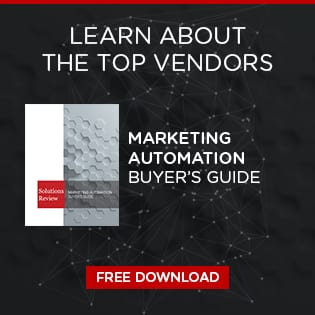The Rise of the Supermarketer

Sandeep Menon, CEO and co-founder at Auxia, explains why traditional marketing structures are crumbling and, from the ashes, a new brand of “supermarketer” is likely to emerge. This article originally appeared in Insight Jam, an enterprise IT community that enables human conversation on AI.
 Marketing teams have reached a breaking point. After speaking with dozens of CMOs and marketing executives over the past year, the same story emerges everywhere: traditional marketing structures have become unsustainable. There’s an emerging new breed of marketing professional who combines strategic thinking with AI-powered analytics, creative vision with data-driven decisions, and campaign orchestration with real-time optimization. These professionals accomplish what previously required entire departments. Welcome to the age of the supermarketer.
Marketing teams have reached a breaking point. After speaking with dozens of CMOs and marketing executives over the past year, the same story emerges everywhere: traditional marketing structures have become unsustainable. There’s an emerging new breed of marketing professional who combines strategic thinking with AI-powered analytics, creative vision with data-driven decisions, and campaign orchestration with real-time optimization. These professionals accomplish what previously required entire departments. Welcome to the age of the supermarketer.
The Bloated Marketing Machine
To understand this transformation, we need to examine what’s driving it. The traditional marketing organization has become surprisingly inefficient, requiring massive support ecosystems to function.
A typical enterprise’s marketing team of 100 people actually requires much more than those 100 marketers to be effective. You also need approximately 10 additional data analysts to make sense of campaign performance and customer behavior. Add another 60 agency staff to manage lifecycle campaigns and advertising across multiple channels. Then layer in 30 more specialists for content creation, brand management, and creative production. That’s 100 people supporting what appears to be a 100-person marketing team. The hidden costs are staggering, but the coordination overhead and delayed decision-making create bigger problems than the financial costs alone.
Consider what happens when a marketing manager wants to understand why a recent email campaign underperformed. Today, that requires submitting a request to the analytics team, waiting for data extraction and analysis, scheduling meetings to review findings, and then potentially engaging additional specialists to implement changes. The entire cycle can take weeks, during which customer behavior continues evolving and opportunities slip away.
The Compression Revolution
AI is fundamentally changing this dynamic by enabling what I call “role compression,” which is the merging of previously distinct functions into unified capabilities. The boundaries between marketer, data scientist, and analyst are blurring as AI agents provide each team member with superpowers they never had before.
Rather than replacing human marketers, AI augments their creativity and strategic thinking with powerful analytical and operational capabilities. The supermarketer of the future will interact with a suite of AI agents that handle the technical heavy lifting, freeing them to focus on higher-value strategic work.
Decision Agents analyze complete customer context—purchase history, real-time behavior, demographic signals—to determine optimal actions for each individual in real-time. Instead of manually configuring rules and segments, marketers set objectives and guardrails while the AI optimizes toward specific business outcomes.
Analyst Agents continuously evaluate campaign performance, identifying patterns and opportunities that would take human analysts days or weeks to discover. What used to require extensive data science expertise now happens automatically, with insights delivered in natural language that any marketer can understand and act upon.
Content Agents generate tailored messaging and creative variants that resonate with individual customers—at scale. Trained on brand guidelines, product catalogs, and historical campaign data, these agents produce subject lines, copy, and image suggestions aligning with performance goals and brand voice. Marketers can review, approve, or tweak outputs, turning what used to be days of production into minutes of iteration and deployment.
The Supermarketer Emerges
This technological foundation enables a new type of marketing professional who operates at a fundamentally different level. Supermarketers set strategic direction for AI systems that execute millions of micro-decisions automatically, while working with AI agents that surface insights and opportunities in real-time.
The shift is already happening. Marketing managers now use AI agents to conduct sophisticated attribution analysis that previously required specialized data science teams. Creative directors work with AI systems that simultaneously generate and test hundreds of message variations, identifying winning approaches in hours rather than months.
This transformation goes beyond individual productivity gains. Supermarketers can move from reactive to proactive marketing strategies. Continuous feedback and optimization recommendations replace quarterly reviews. AI systems that learn and adapt continuously replace sequential A/B tests that take weeks to reach statistical significance.
The Competitive Imperative
The rise of the supermarketer represents a competitive necessity. As AI-powered personalization becomes table stakes for customer experience, organizations with traditional team structures will find themselves increasingly disadvantaged.
Companies operating with supermarketer teams can iterate faster, personalize deeper, and optimize more effectively than those managing large, fragmented organizations. They can test more hypotheses, adapt quickly to changing customer behavior, and scale successful strategies more efficiently. The window for this transformation is narrowing. Early adopters are already establishing competitive moats through superior customer experiences that traditional marketing teams cannot match with existing tools and organizational structures.
Marketing leaders have a choice: proactively embrace the supermarketer transformation or react as competitive pressures mount. Organizations that make this shift successfully will redefine what’s possible when human creativity combines with AI capabilities, moving far beyond improved marketing effectiveness.
The age of the supermarketer has begun. Organizations must decide now whether to lead this transformation or watch competitors pull ahead.




















